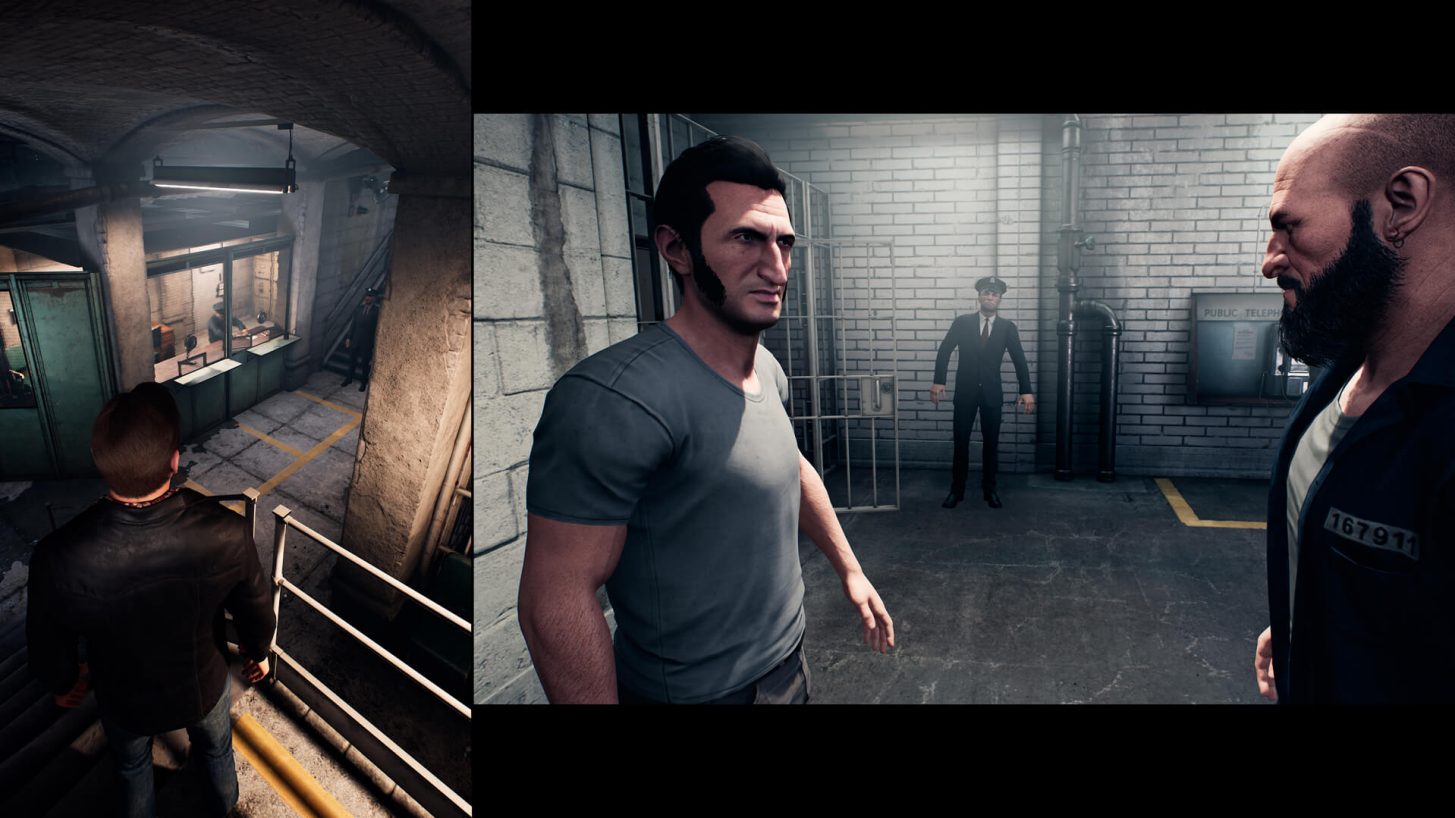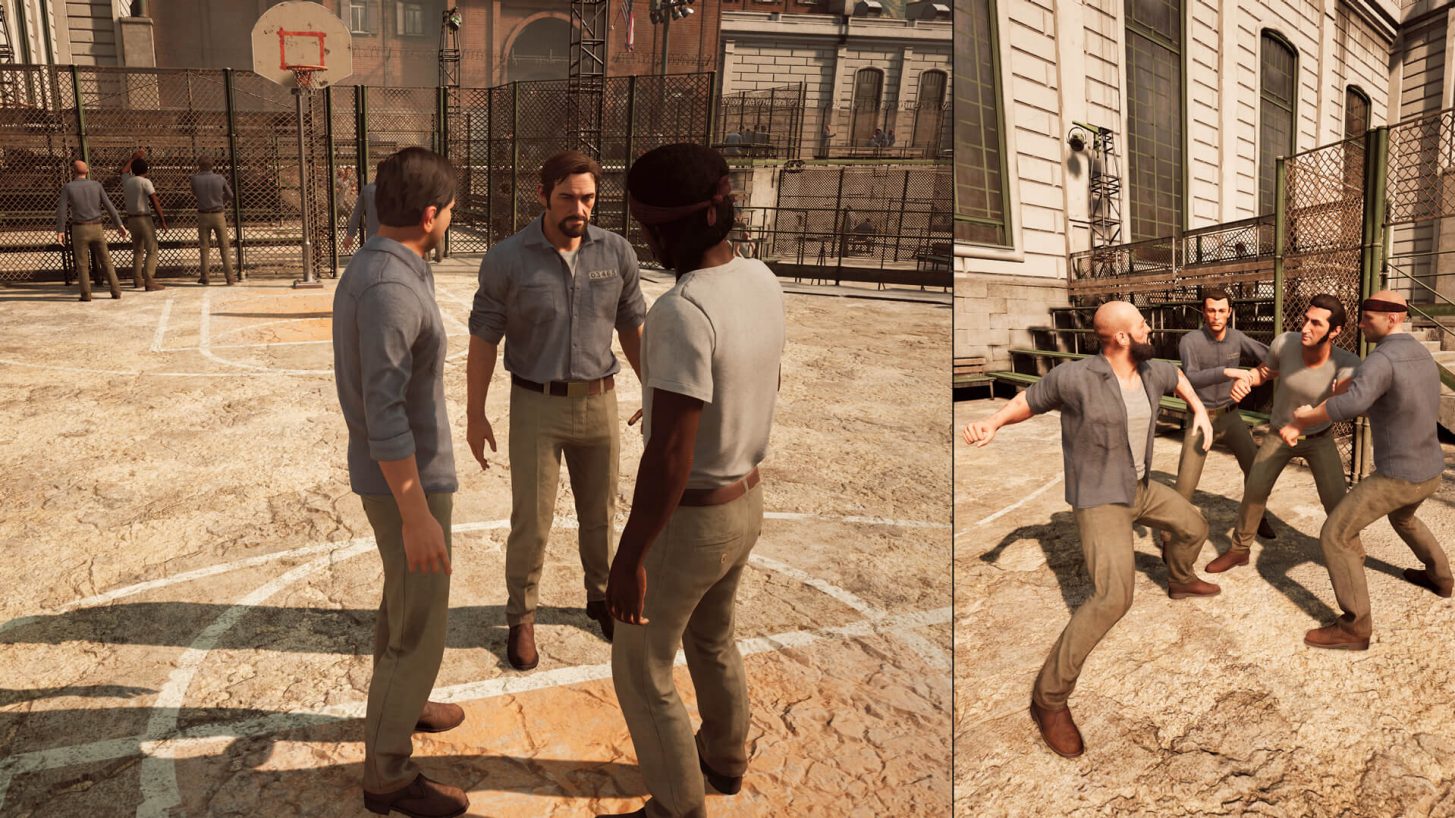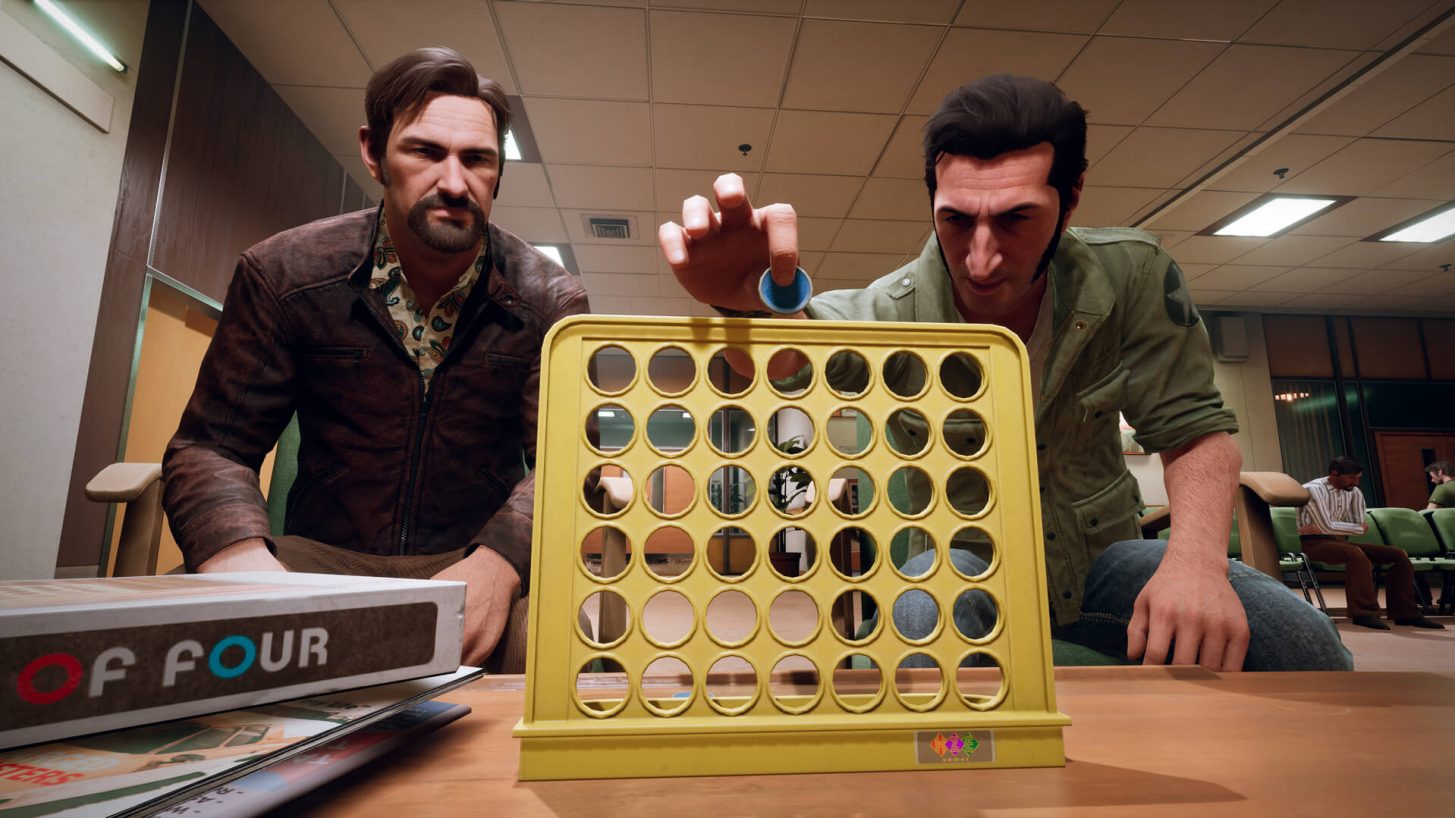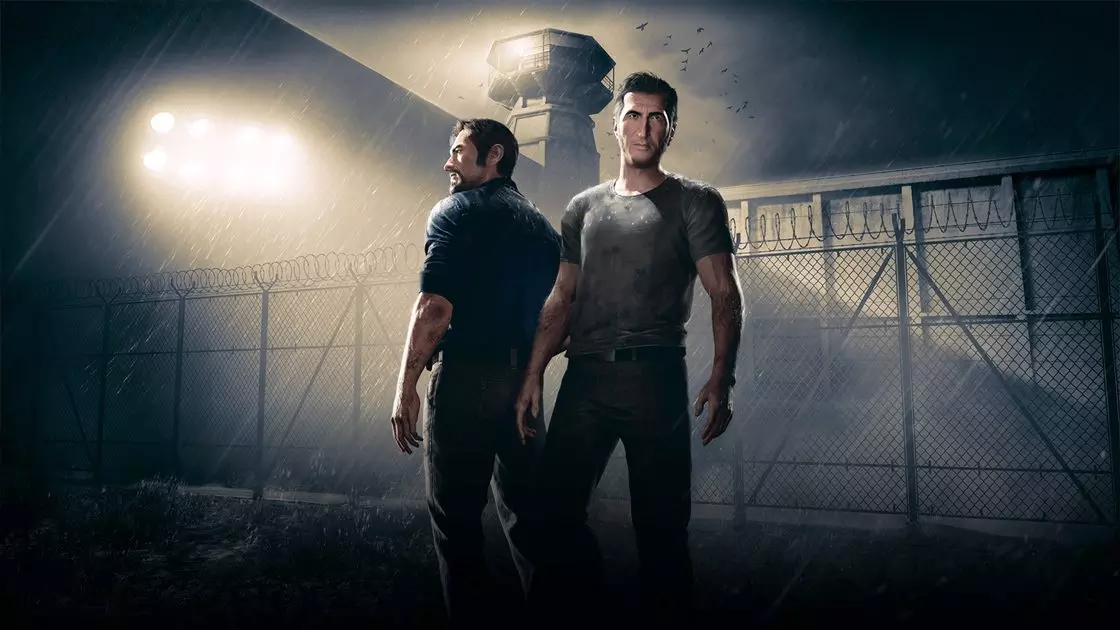Cell Block H
A Way Out is the second game directed by Swedish filmmaker Josef Fares, but the first with his own studio, newly formed Hazelight. His previous effort, Starbreeze’s Brothers: A Tale of Two Sons, was a heartfelt little fantasy adventure with a unique concept, playing almost as a ‘single-player co-op’ experience that expertly used its controls to enhance its themes and emotional impact.
His latest game, then, a proper co-op experience, is a story-focused jailbreak that although a fun and worthwhile ride, sees too many clichés dull its emotional edge.
Cell Block H
The plot follows the blossoming partnership of hardened felon Leo Caruso and the newly incarcerated Vincent Moretti who, after a few chance encounters, realise they have a common enemy on the outside and vow to work together to escape and exact revenge.
And it’s in the requirement to work together with a co-op partner that A Way Out excels, as you help the pair escape, stay free, and eventually launch an assault on those that wronged them.
You see, a lot of co-op games are co-op only in the sense that two or more players exist in the same space, performing the same functions, but here nearly every action you perform directly benefits the other player and keeps the story moving forward in meaningful ways. In one scene, for example, one of you might need to distract an NPC while the other nabs a vital tool. Another might see one of you stow away in a laundry cart while the other pushes it through a secure area. Later, you might be providing covering fire while your partner flanks, or you might help each other through stumbles in some of the more dramatic, action-packed chase sequences. How well even the smallest interactions snowball into something greater over the course of every scene is truly impressive.
Thanks to the smart ways with which A Way Out uses split-screen as a mechanic to build tension and focus your attention on the most pressing matters (yes, even when playing online), working together when Leo and Vincent are apart is just as enjoyable. It might sound annoying to give up a decent chunk of your screen’s real-estate, especially when you have a TV to yourself, but that alone led to some of my favourite scenes. It’s absolutely thrilling to watch on helplessly as your fellow fugitive tries to fulfil their end of whatever scrape you’re trying to get through, while you simultaneously cause a diversion or wait for the right time to make your move.

That said, Hazelight have a good handle on when to wrest control away from one of you to give certain scenes the full-screen gravitas they deserve, allowing characters to have their reflective or badass moments when the story calls for it. Pacing and transitioning throughout the six-hour campaign’s brash, stylish action sequences and its quieter stints are superbly directed, knowing when to give you the chance to catch your breath, settle those nerves, or maybe even have a bit of competition with some of the mini-games littered throughout. Although completely unnecessary, Leo and Vincent can partake in male bonding by playing an arcade game here, tossing horseshoes there, or by throwing a few baseballs at each other. These optional, fun asides are naturally placed and help some of the end-game scenes hit home a little better.
Where A Way Out disappointed me, however, were all the places it shouldn’t given its director’s filmmaking background and from what I’d experienced in Brothers.
Set up like ‘The Odd Couple’, both protagonists are almost painful stereotypes and are, predictably, the antithesis of each other. Leo is the likeable but quick-to-temper thicky, Vincent the sly, mild-mannered fraudster, and while mechanically at least these characterisations are used to decent effect, such as when players are forced to choose between Leo’s way or Vincent’s (your choice impacting the nature of the ensuing scene), their one-notedness prevented me from empathising with either of them.
Equally, though Leo is reluctant to trust another inmate in the beginning, the way their partnership develops feels too speedy and at times forced. This is especially true of how the pair open-up about their pasts in huge blurts, and how Hazelight chose to front load unnecessary exposition through ‘present day’ interludes instead of allowing the information to unfold naturally.

A Way Out also leaves logic at the door at times, not through the duo’s actions, rather in the design of the world around them. As an early example, I had to wonder how poop leaves their cells given ‘stage one’ of their plan. It’s an oversight, one that doesn’t detract from the fun of working through the puzzle with a co-op partner, but such occurrences were jarring enough that my wife and I joked about them between scenes. I hate to bring him up unnecessarily as it always feels like a cheap shot, but it’s the type of lapse you’d see in a David Cage game, for sure.
While those aspects for some are easily ignorable because–shrug–videogames, worse still was the continual aping of some of cinema’s most notable crime movies. Movies like Heat and Oldboy are referenced so unswervingly that it goes far beyond a nod and a wink, and only served as a distraction in a final-third that otherwise would have surely wowed. It also, disappointingly, led to one of the most predictable endings I’ve seen in quite some time, which I’d called at the start and knew for certain was going to happen when the classic movie tropes started rolling in en masse.
Which is funny, really, given Josef Fares’s infamous ‘fuck the Oscars’ moment at the 2017 Game Awards. Yes, fuck the movie industry. Except these things I’m borrowing heavily from. But, that’s an aside.

Verdict
A Way Out is one of those that I didn’t really love but loved playing through. Though much of my enjoyment came from the act of playing it with another person–from having that shared tension and panic during expertly crafted co-op scenarios–and not its cliched story or characters, though both had their moments.
Still, the fact that most of the lacking elements are built around such a strong core, and that every scene has a terrific pace and undeniable flair no matter how derivative, meant it was hard not to enjoy it moment-to-moment. A classic case of style over substance, but fun while it lasts.




